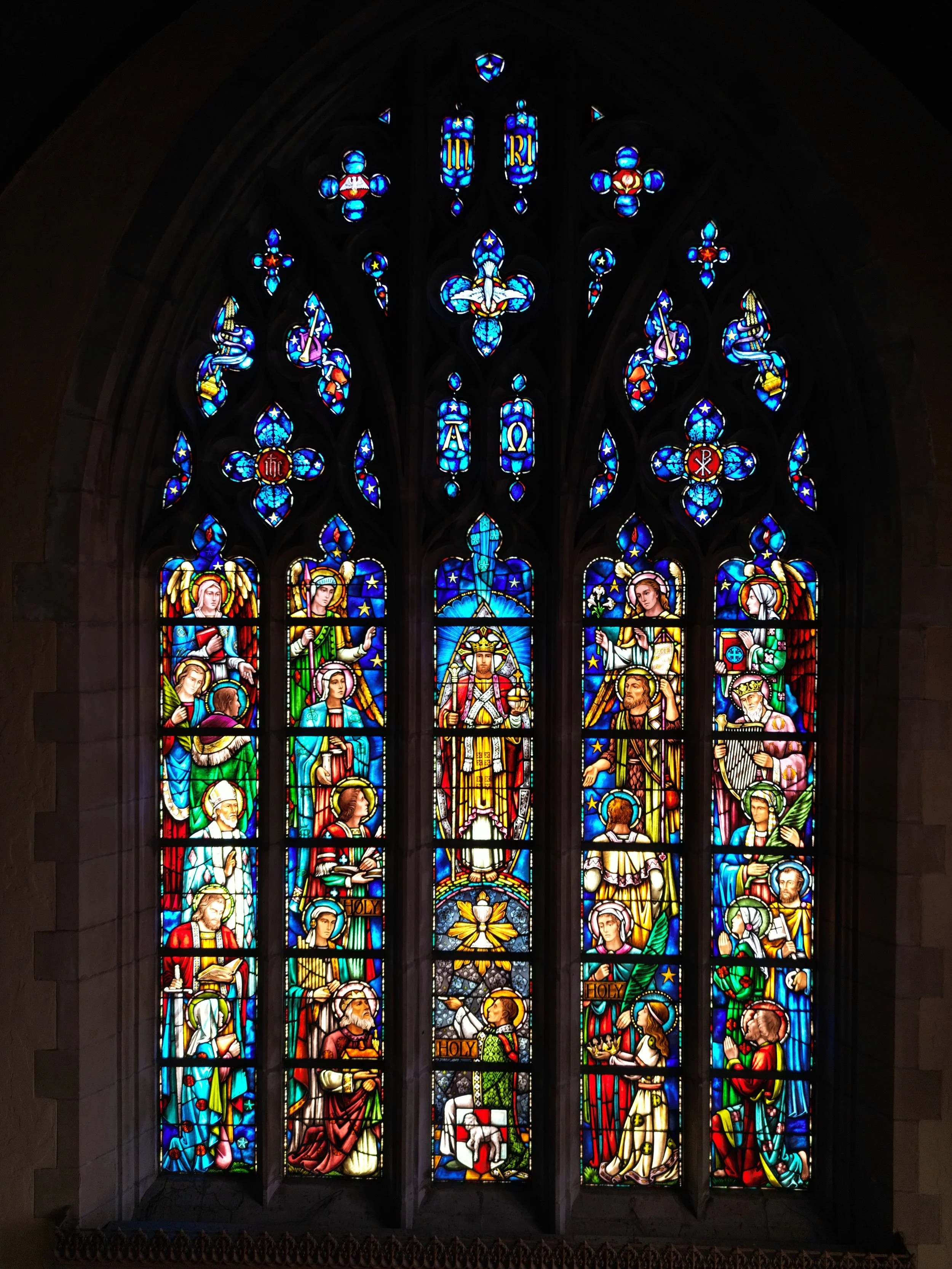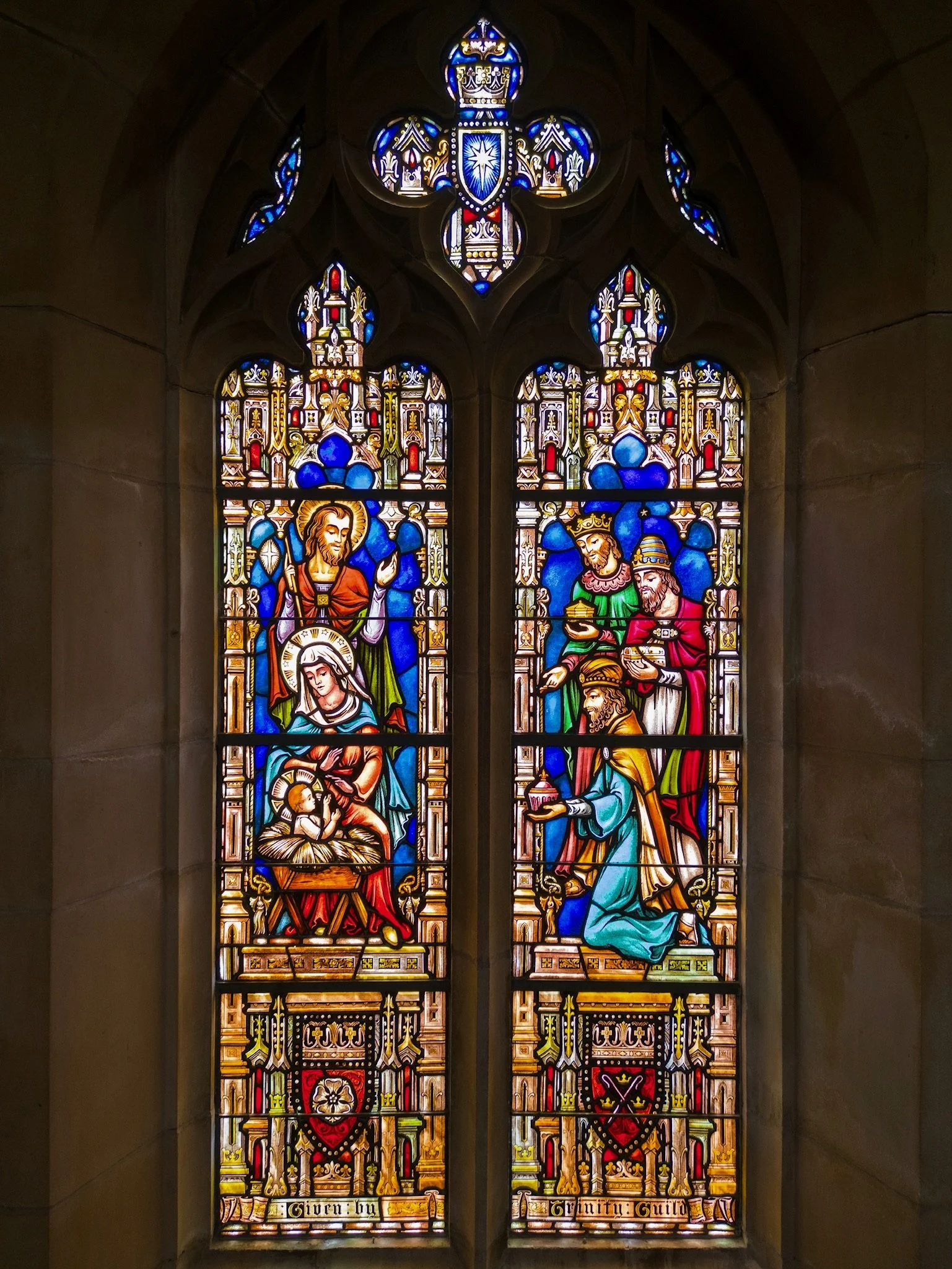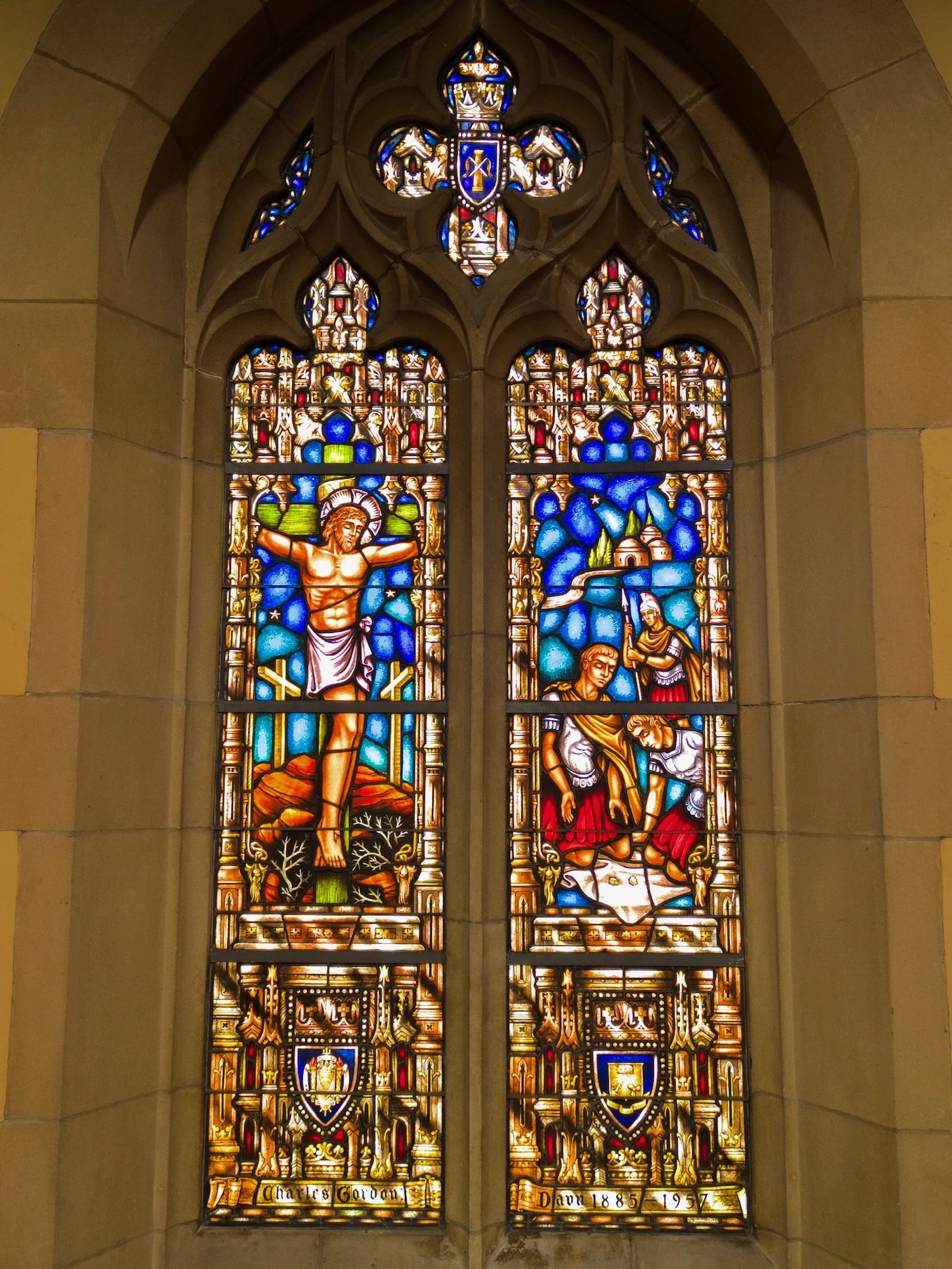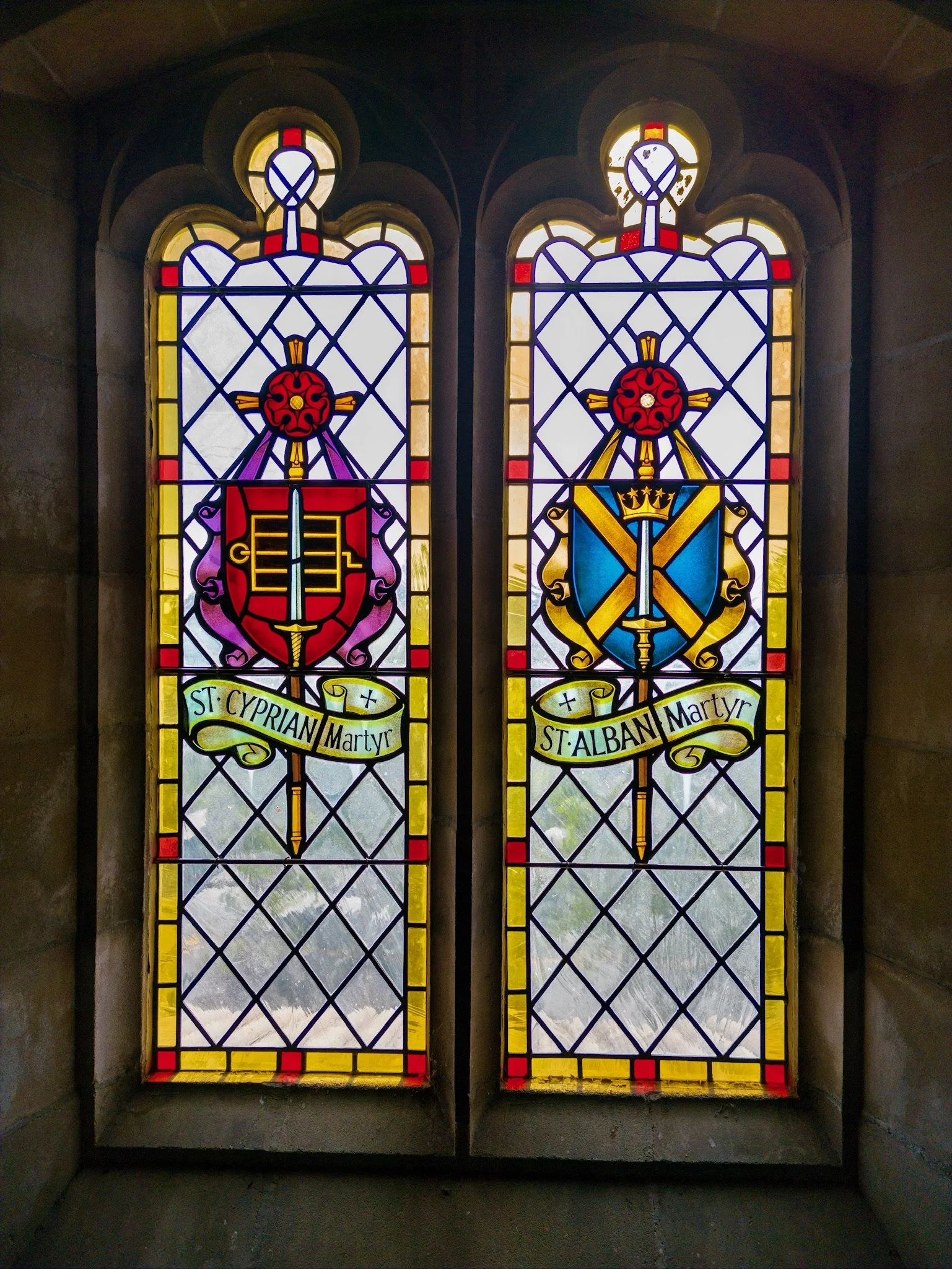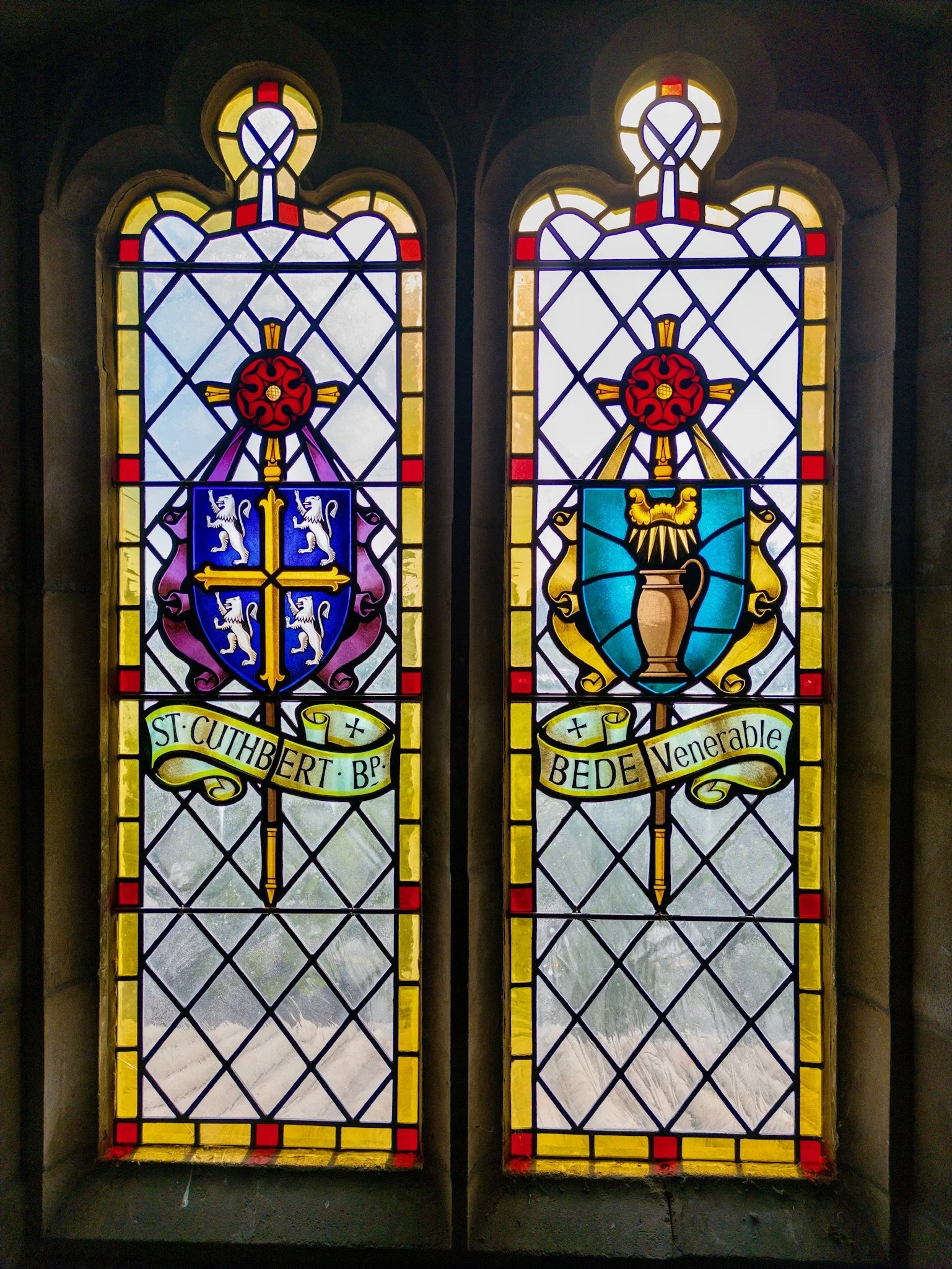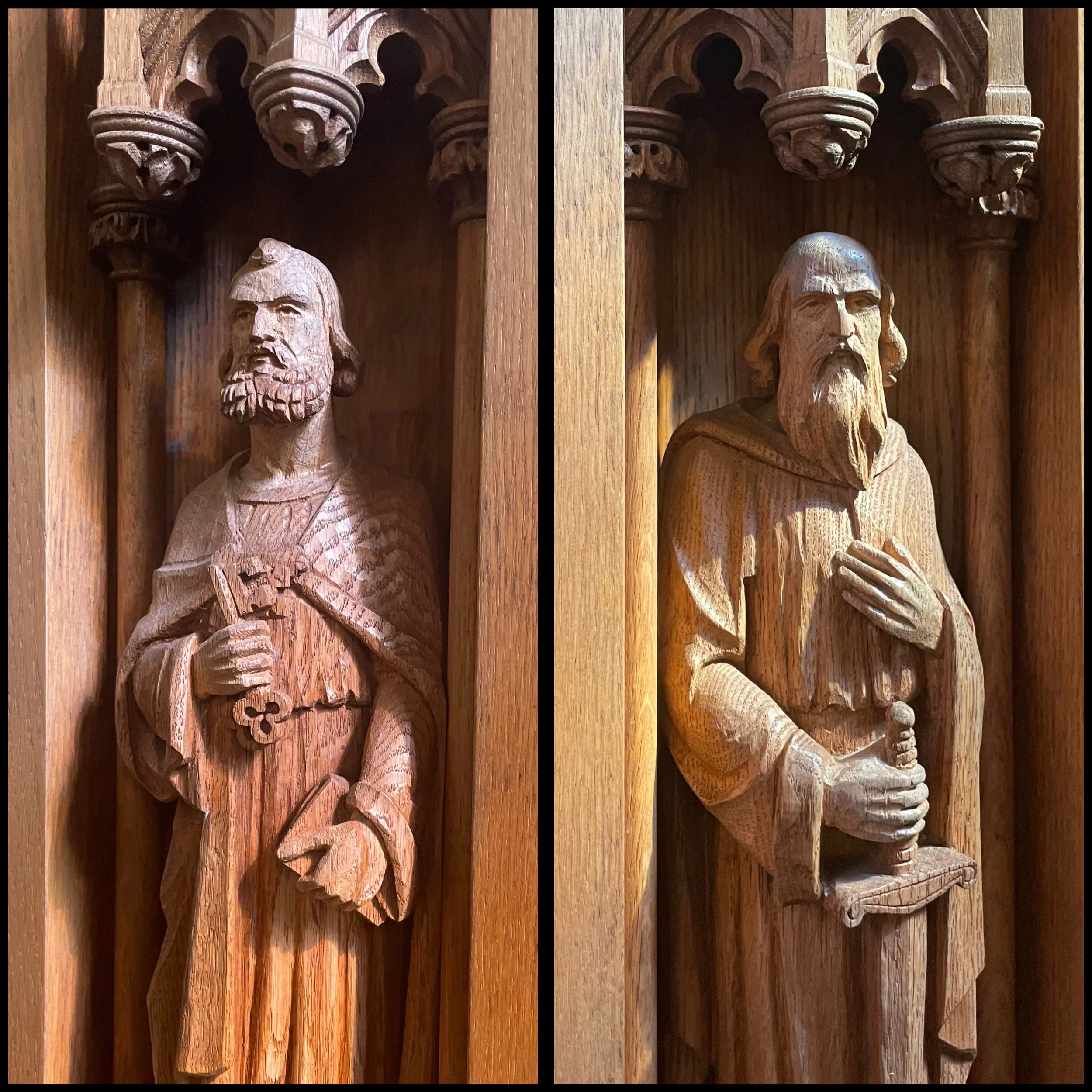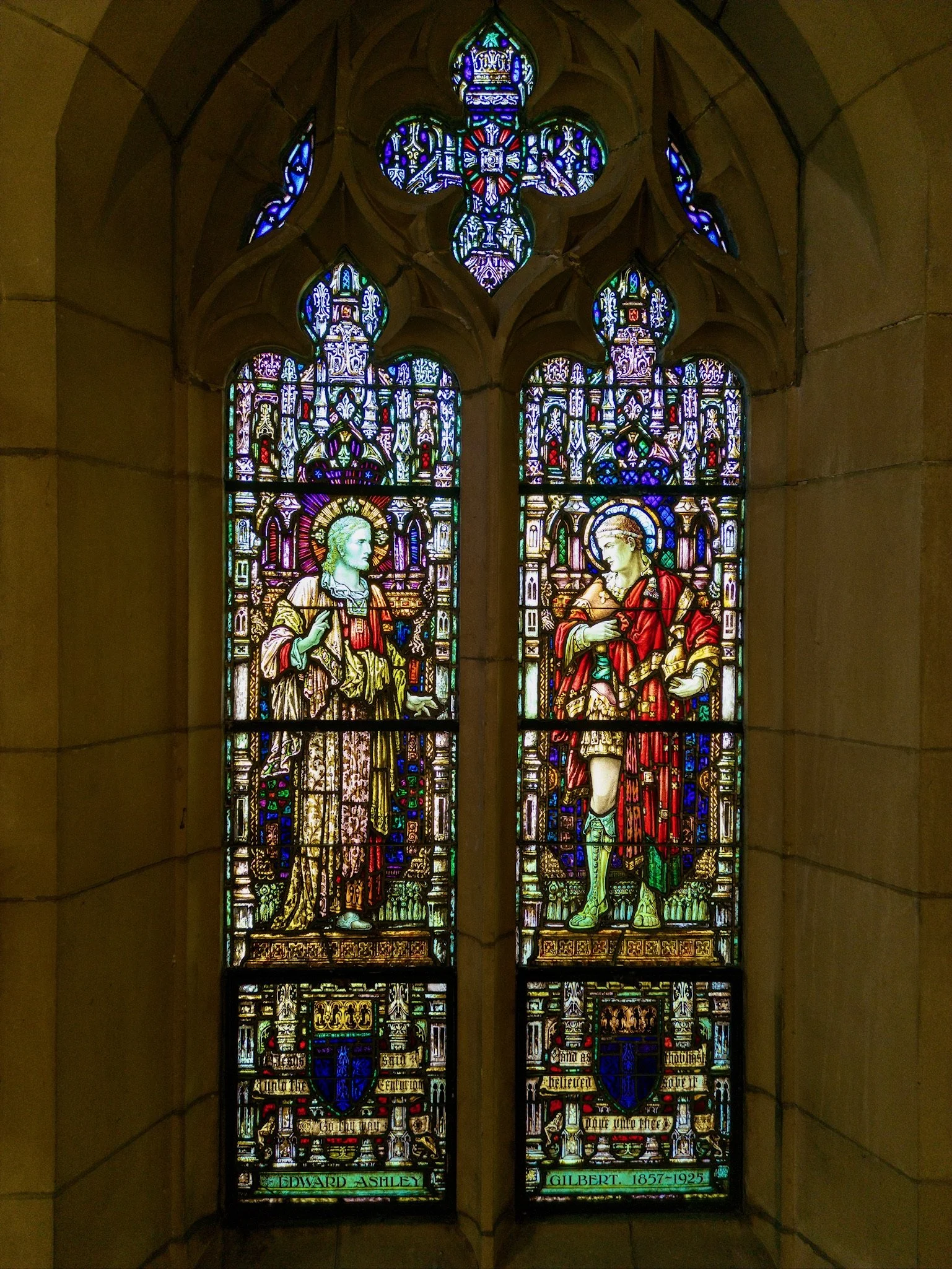Our Windows
The beautiful memorial windows of Trinity Episcopal Church were installed over a 30-year period as funds became available. All but the clerestory windows and “Christ and the Centurion” on the west wall were designed and fabricated by the Judson Studios in Los Angeles. Now celebrating 103 years in business, this studio is credited with producing many of the most exquisite stained glass windows throughout the United States.
Following a process little changed from the Middle Ages, windows are entirely handmade. Each one starts life as a small watercolor and moves through a series of production steps from working drawings to templates to kiln. At one crucial step, artists paint details onto the surface of the cut pieces of colored glass, adding everything from facial features to shading. These details are fused into the glass through firing, after which pieces are assembled one section at a time.
Metals and metallic oxides added to molten glass create the colors. Gold is added for ruby, cobalt for deep blue, and manganese for amethyst. Stained glass never fades and certain colors are symbolic. Green is the color of nature, signifying hope and an acknowledgment of eternal life, and blue indicates heavenly strength. Red, not surprisingly, represents love and zeal while purple and violet are the colors of penitence.
Aisle Windows
The Nativity
The Crucifixion
Because the aisle windows are viewed at close range, they were designed with identical borders which focus attention on the subject. At the base of each lancet, as well as at the top of each Gothic arch, are biblical symbols. Among the many symbols in Trinity’s windows are: wheat, a sign of God’s bounty; the six-pointed star, representing God the Creator; and the letters Alpha, Omega, IHS, and XP (chi-rho), all symbols for Jesus Christ. Lamps represent wisdom while grapes and wheat symbolize the Eucharist. Birds represent human souls and the descending dove signifies the Holy Spirit.
The aisle windows tell the story of the life of Jesus. On the south side are the Annunciation, the Nativity, Presentation of Christ at the Temple, and the Baptism of Our Lord. On the north are the Triumphal Entry into Jerusalem, the Last Supper, Gethsemane, and the Crucifixion.
The clerestory windows were the last to be installed at Trinity. They were designed and fabricated by the Whipple Company of Great Britain and shipped to Santa Barbara. Each displays a crest representing an individual saint (along the south wall) or an influential leader of the American Episcopal Church (along the north wall).
The south wall clerestory windows feature the crests of St. Cyprian (210-258), St. Alban (3rd or 4th century), St. Cuthbert (634-687), St. Bede the Venerable (672-735), St. Francis of Assisi (1181-1226), St. Clare (1194-1253), Reverend William Tyndale (1494-1536), and Samuel Seabury (1729-1796).
The windows on the north wall feature William White (1748-1836), Absalom Jones (1746-1818), John Keble (1792-1866), James L. Breck (1818-1876), Jackson Kemper (1789-1870), Rev. James Dekoven (1831-1879), Samuel L. Schereschewsky (1831-1906), William Temple (1881-1944), Charles H. Brendt (1862-1929), and Joseph Johnson (1847-1928).
Clerestory Windows
Window of St. Cyprian and St. Alban
Window of St. Cuthbert and St. Bede
Tiles and Carvings
The chancel floor is paved with craftsman tile. In the center of the floor is a medallion of Batchelder tiles, with the XP (chi ro) initials for Christ, surrounded by symbols of the evangelists: Matthew (the angel), Mark (the lion), Luke (the ox) and John (the eagle). Ernest Batchelder was the preeminent Arts and Crafts tile maker in southern California at the time of Trinity’s construction.
Symbol of St. Matthew
The carved furniture, oak pulpit and limestone font were created by Ernest H. Grassby of Los Angeles. The carvings have a floral theme, the oak leaf being a recurring symbol. As parishioner Bill LaVoie writes: “The oak leaf, a symbol found in Druid mythology, is a symbol for strength and vigor.”
The baptismal font (detail)
The symbols of the four evangelists appear again in four of the shields on the reredos. This piece was installed in 1964, and was designed by Trinity’s original architect, Philip Frohman. The reredos continues the theme of the evangelists, also adding Saint Peter and Saint Paul, identified by their symbols, the keys and sword.
Figures of Saints Peter and Paul
Guide to
Windows and Architecture
We are still building this page — keep checking back as more is added!

